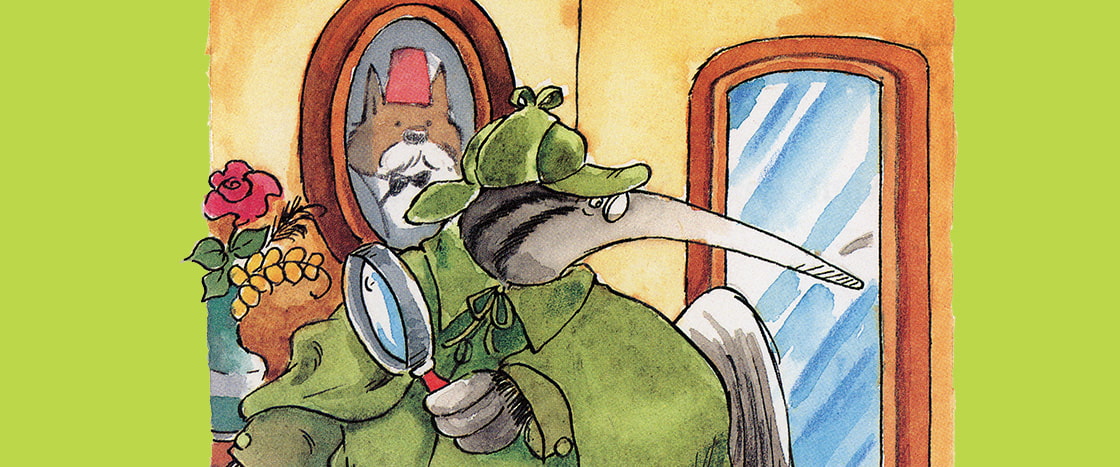Aunt Eater the anteater loved mysteries. And she loved her Halloween costume.
“It’s perfect!” she said. “I look like a real detective.”
She was ready for the big party.

Can Aunt Eater follow the clues and prove that there is no monster? Find out in this classic story by award-winning author and illustrator Doug Cushman.
Aunt Eater the anteater loved mysteries. And she loved her Halloween costume.
“It’s perfect!” she said. “I look like a real detective.”
She was ready for the big party.
On the way, she saw a pirate.
“Is that you, Wally?” she asked.
“I need help,” said Wally. “There is a monster in my kitchen.
I think it ate my father!”
“That is silly,” said Aunt Eater. “There is no such thing as monsters.”
They went to Wally’s home.
Aunt Eater looked inside. She saw a shadow on the wall.
“It does look like a monster,” she said.
“OOOHHH!” it said.
“It does sound like a monster,” said Aunt Eater.
She closed the door.
“My father and I went trick-or-treating,” said Wally.
“Then we came home. He went into the kitchen.”
“I heard scary noises,” said Wally. “He didn’t come back.”
Aunt Eater did not believe in monsters.
“I’m going back in,” she said.
“Be careful,” whispered Wally.
“OOOHHH!” said the monster. Aunt Eater saw candy wrappers on the floor.
“A clue!” said Aunt Eater.
She followed the trail of wrappers.
It went behind the table.
“OOOHHH!” said Wally’s father. “I ate too much candy.
Now I feel sick.”
“The mystery is solved,” said Aunt Eater.
“This monster just needs a cup of tea and a good night’s sleep.”
About the Story
Elements of a story
Genres of literature
ESSENTIAL QUESTION
The essential question of this issue is What is a mystery? The articles below connect to this theme.
Through the above genres, students will discuss:
Read-Aloud
Technology Time
Online Read-Aloud
1. BEFORE READING
Show a Video (10 minutes)
Preview the Title and Set a Purpose for Reading (5-10 minutes)
2. READ THE STORY (10-20 MINUTES)
SEL Focus: Key details (10 minutes)
Writing Focus: Presenting Knowledge (20 minutes)
ELA Focus: Key details (10 minutes)
AUTHOR/ILLUSTRATOR CONNECTION
Draw Aunt Eater Step-by-Step